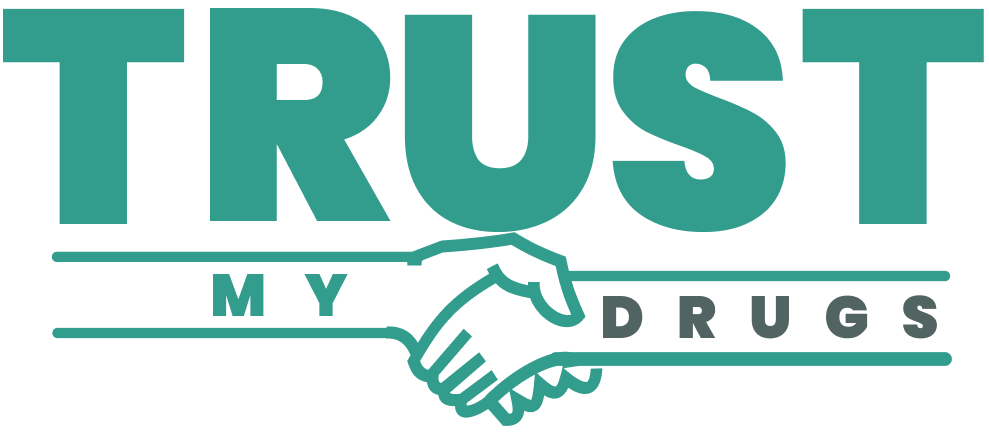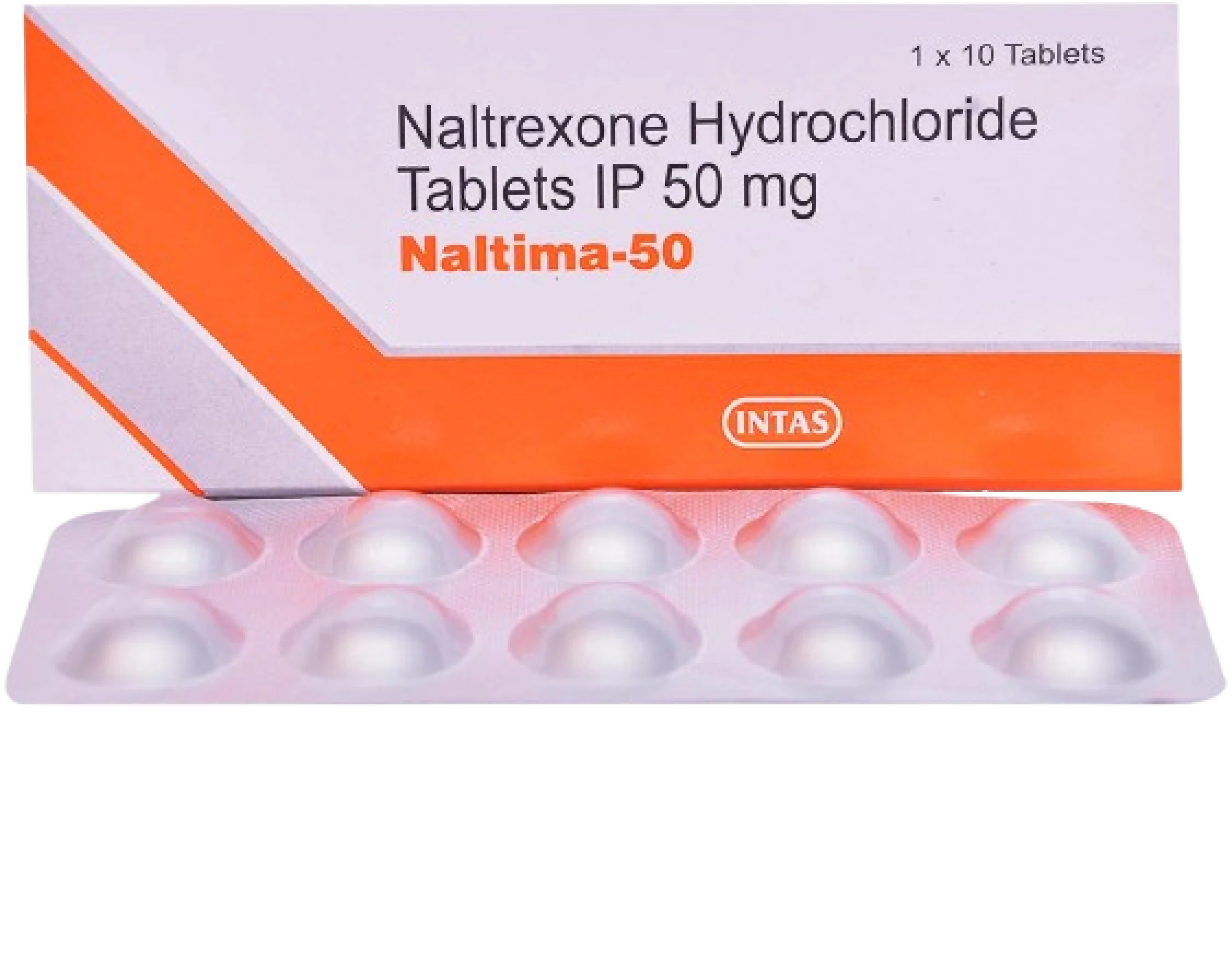By blocking the euphoric effects of alcohol and opioids, Naltima significantly reduces the risk of relapse, especially when combined with counseling or therapy. The medication is suitable for prolonged use under medical supervision and a long-term recovery strategy. Naltima 50 mg is an FDA-approved treatment that ensures safety and efficacy for patients battling addiction. This medication, alongside behavioral therapies, support groups, or other medical treatments, provides a comprehensive approach to recovery.
What is Naltima 50mg?
Naltima 50 mg contains Naltrexone Hydrochloride, an opioid receptor antagonist that helps in treating alcohol dependence and opioid addiction. Its primary function is to block the effects of alcohol and opioids in the brain, reducing cravings and preventing relapse. Naltima 50 mg contains Naltrexone Hydrochloride, works as an opioid receptor antagonist, and blocks opioid receptors in the brain. It prevents the user from experiencing the pleasurable effects of alcohol or opioids, discouraging continued use. Naltima eliminates the reward mechanism without creating dependence.
How Does Naltima 50 mg Work?
Naltima 50 mg contains Naltrexone Hydrochloride, an opioid receptor antagonist that helps in treating alcohol dependence and opioid addiction. Its primary function is to block the effects of alcohol and opioids in the brain, reducing cravings and preventing relapse.
Mechanism of Action
- Blocks Opioid Receptors
Naltrexone (the active ingredient) binds to mu-opioid receptors in the brain and acts as an antagonist. By blocking these receptors, it prevents the euphoric and sedative effects of opioids (like heroin, morphine, or prescription painkillers) if consumed. It makes taking opioids less desirable, as the user does not feel "high."
- Reduces Alcohol Cravings
Naltima works by modulating the brain's reward system. It interacts with opioid receptors involved in the release of dopamine, the "feel-good" chemical linked to alcohol consumption. By blocking the pleasurable effects of alcohol, it reduces the urge to drink.
What Happens When You Take Naltima?
For Alcohol Dependence
Alcohol usually triggers a surge of dopamine in the brain, creating feelings of pleasure. Naltima blocks this response, reducing the reward associated with drinking, which helps diminish cravings and the likelihood of relapse.
For Opioid Dependence
If a person on Naltima uses opioids, the medication prevents the drugs from binding to receptors and producing their usual effects, such as euphoria or pain relief. It discourages further use because the individual realizes that the opioids have no effect.
Prevents "High" Feeling
Naltima ensures that alcohol or opioid use does not produce the pleasurable effects that fuel addiction.
Non-Addictive
Naltima does not have addictive properties or cause dependence.
Long-Term Recovery Support
It helps patients stay on track during recovery by reducing cravings and the risk of relapse.
How Long Does It Take to Work?
Opioid Dependence: Naltima works within 1-2 hours of taking the dose and remains effective for about 24 hours.
Alcohol Dependence: Regular use reduces cravings over time, typically within a few weeks, as part of a comprehensive treatment plan.
Note:
- Start Naltima only after detoxification to avoid triggering withdrawal symptoms in opioid users.
- Combine the treatment with behavioral therapy, counseling, or support groups for the outcome of Naltima to be effective.
- Always use Naltima under the supervision of a healthcare provider to ensure safe and effective treatment.
What are the Uses and Benefits of Naltima 50mg?
Uses of Naltima 50 mg
Alcohol Dependence
- Reduces cravings and the desire to drink alcohol.
- It helps prevent relapse in individuals who have stopped consuming alcohol.
Opioid Dependence
- Blocks the effects of opioids (e.g., heroin, morphine, and oxycodone) by preventing them from binding to receptors in the brain.
- Prevents the high or euphoric sensation associated with opioid use, discouraging continued consumption.
Relapse Prevention
- It acts as a maintenance therapy to help individuals stay sober after detoxification.
- Reduces the risk of returning to heavy drinking or opioid use.
Part of a Comprehensive Treatment Plan
Often prescribed alongside counseling, behavioral therapy, or support groups like Alcoholics Anonymous (AA) or Narcotics Anonymous (NA).
Benefits of Naltima 50 mg
Prevents Relapse
Naltima significantly lowers the chances of relapse by reducing cravings and blocking the pleasurable effects of alcohol and opioids.
Non-Addictive
Unlike some other treatments (e.g., methadone), Naltima does not cause dependence or withdrawal symptoms.
Dual-Action
It is effective for treating both alcohol dependence and opioid addiction, making it versatile and suitable for patients with co-occurring substance use disorders.
Convenient Dosage
A single tablet (50 mg) taken once daily is enough to maintain its effects, ensuring ease of adherence to the treatment plan.
Safe Long-Term Use
Well-tolerated over extended periods, it is suitable for individuals requiring prolonged therapy.
Improves Quality of Life
Supports individuals in achieving and maintaining sobriety, leading to better physical health, mental stability, and improved relationships and productivity.
FDA-Approved
Naltrexone, the active ingredient in Naltima, is FDA-approved, ensuring its safety and efficacy in treating addiction.
What are the Safe Dosages of Naltima 50mg?
Standard Dose for Alcohol Dependence
Usual Dose: Take 50 mg (1 tablet) once daily. It is the most commonly prescribed dosage to help reduce alcohol cravings and prevent relapse.
Standard Dose for Opioid Dependence
Starting Dose: After completing detoxification (free from opioids for 7–10 days), start with a 25 mg dose (half tablet) on the first day to check for tolerance. If no adverse reactions occur, a doctor may increase the dose to 50 mg once daily from the second day onward.
Alternative Dosing Regimens (For Opioid Dependence Only)
Higher Doses for Longer Action (as prescribed by a doctor)
100 mg every other day or 150 mg every three days (e.g., Monday, Thursday, Sunday). These schedules are suitable for patients who prefer less frequent dosing.
Patients with Liver or Kidney Impairment
The body metabolizes Naltima in the liver and excretes through the kidneys. Doctors may reduce or adjust the dosage in patients with moderate liver or kidney issues. Those with severe liver failure or advanced kidney disease must abstain from the medication.
Older Patients
Start with the lowest effective dose because of potential age-related changes in liver or kidney function.
Children and Adolescents
Medical science has not established the safety and efficacy of Naltima for individuals under 18.
Opioid-Free Requirement
Ensure the patient has been opioid-free for 7–10 days before starting Naltima to avoid triggering sudden and severe withdrawal symptoms.
No Alcohol Use during Therapy
Avoid alcohol consumption while on Naltima to ensure its effectiveness.
Missed Dose
If you miss a dose, take it as soon as you remember unless it is almost time for the next scheduled dose. Do not double the dose.
Do Not Exceed the Prescribed Dose
Exceeding the prescribed dose may increase the risk of side effects like liver damage or severe nausea.
How to take Naltima 50mg?
Ensure you have completed the Opioid-Free or Alcohol Detox period.
For Opioid Dependence, you must be opioid-free for 7–10 days before starting Naltima to avoid sudden withdrawal symptoms. A doctor must run a urine test to confirm no opioids are in your system.
For Alcohol Dependence, begin treatment after completing the initial detoxification process (alcohol-free).
Standard Dose: Take one tablet (50 mg) once daily or as your doctor directs.
First-Time Users (Opioid Dependence): Start with a lower dose of 25 mg (half a tablet) on the first day to check for tolerance. If no adverse effects occur, continue with 50 mg once daily from the second day.
When to Take
Take Naltima at the same time every day for consistency and to maintain stable medication levels in your system. You can take Naltima with or without meals. If you experience nausea, taking it with a meal or snack may help. Swallow the whole tablet. Do not crush, chew, or break the tablet. Swallow it whole with a full glass of water.
When Should I Avoid Naltima 50mg or use Naltima 50mg cautiously?
When Should I Avoid Naltima 50mg?
Active Opioid Use
Do not use Naltima if you are currently taking opioids. It can cause severe opioid withdrawal symptoms by blocking opioid receptors.
Opioid Withdrawal Symptoms
Avoid starting Naltima if you are experiencing acute withdrawal from opioids. Complete the detoxification (opioid-free for 7–10 days) before treatment.
Allergic Reactions
If you have a known allergy or hypersensitivity to Naltrexone or its components, you should not take Naltima.
Severe Liver Impairment
Naltima contraindication in patients with severe liver disease, as it can worsen liver function. Run the Liver enzyme tests before starting the medication.
Severe Kidney Disease
Avoid using Naltima if you have advanced or severe kidney impairment, as the body partially excretes the drug through the kidneys.
Pregnancy and Breastfeeding
Naltima contraindication during pregnancy unless deemed necessary by a doctor. The safety of Naltima in breastfeeding mothers is not well-established.
Concomitant Use of Painkillers
If you are on opioid-based pain medications (e.g., morphine, oxycodone), Naltima can block their effects, making them ineffective.
When to Use Naltima 50 mg Cautiously?
History of Depression or Suicidal Thoughts
Naltima may cause mood changes or worsen pre-existing depression. Monitor the outcome of the treatment if you have a history of mental health issues.
Mild to Moderate Liver Dysfunction
Use Naltima with caution in mild liver impairment. Regular monitoring of liver enzymes is essential.
Recent Surgery or Pain Management
Inform your doctor if you may need opioid-based pain relief (e.g., after surgery), as Naltima will block these medications' effects.
Concurrent Medications
Caution is required when taking other medications, especially those metabolized in the liver, to avoid drug interactions.
Older Patients
Older adults may require dose adjustments because of age-related liver or kidney changes.
Post-Detoxification Period
If you are unsure about your opioid-free status, your doctor may perform a naloxone challenge test to check for opioid dependence before starting Naltima.
What are the Side effects of Naltima 50mg?
Common Naltima 50mg Side Effects
- Nausea
- Vomiting
- Abdominal pain or discomfort
- Loss of appetite
- Diarrhea or constipation
- Headache
- Dizziness
- Fatigue or tiredness
- Difficulty sleeping (insomnia)
- Anxiety
- Irritability or mood changes
- Mild rash
- Itching
- Muscle or joint pain
- Increased thirst
- Sneezing or nasal congestion
Severe Naltima 50mg Side Effects
- Liver issues (Hepatotoxicity)
- Severe Allergic Reactions
- Depression or worsening of pre-existing depression
- Suicidal thoughts or behavior
- Severe anxiety or mood swings
- Difficulty breathing or wheezing
- Opioid Withdrawal Symptoms
- Rapid heartbeat or chest pain (rare but possible)
- Kidney Problems
- Swelling in the feet or ankles
- Decreased urination


